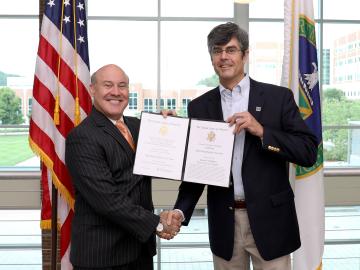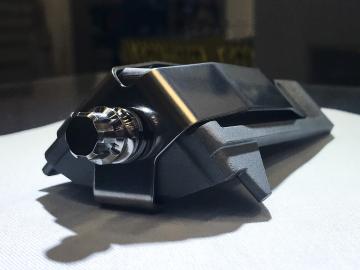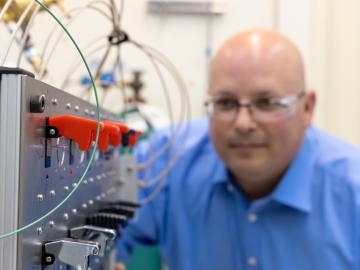
Filter News
Area of Research
- Advanced Manufacturing (2)
- Biology and Environment (4)
- Energy Science (11)
- Fusion and Fission (18)
- Fusion Energy (9)
- Isotopes (20)
- Materials (22)
- National Security (11)
- Neutron Science (4)
- Nuclear Science and Technology (28)
- Nuclear Systems Modeling, Simulation and Validation (1)
- Quantum information Science (1)
- Supercomputing (23)
News Type
News Topics
- (-) Cybersecurity (17)
- (-) Exascale Computing (52)
- (-) Isotopes (40)
- (-) Nuclear Energy (90)
- (-) Space Exploration (23)
- (-) Statistics (3)
- 3-D Printing/Advanced Manufacturing (93)
- Advanced Reactors (26)
- Artificial Intelligence (94)
- Big Data (67)
- Bioenergy (86)
- Biology (102)
- Biomedical (55)
- Biotechnology (29)
- Buildings (55)
- Chemical Sciences (50)
- Clean Water (31)
- Composites (22)
- Computer Science (159)
- Coronavirus (31)
- Critical Materials (18)
- Education (2)
- Emergency (4)
- Energy Storage (69)
- Environment (172)
- Fossil Energy (7)
- Frontier (46)
- Fusion (49)
- Grid (56)
- High-Performance Computing (94)
- Hydropower (12)
- Irradiation (2)
- ITER (7)
- Machine Learning (54)
- Materials (89)
- Materials Science (98)
- Mathematics (12)
- Mercury (10)
- Microelectronics (3)
- Microscopy (38)
- Molten Salt (7)
- Nanotechnology (33)
- National Security (66)
- Neutron Science (112)
- Partnerships (37)
- Physics (43)
- Polymers (21)
- Quantum Computing (39)
- Quantum Science (59)
- Security (19)
- Simulation (53)
- Software (1)
- Summit (48)
- Transportation (71)
Media Contacts

Oak Ridge National Laboratory researchers have created a technology that more realistically emulates user activities to improve cyber testbeds and ultimately prevent cyberattacks.

A 25-year career with the U.S. Navy, commanding combat missions overseas, brought Tom Kollie back to where he came from — ready to serve his country in a new way.

As a medical isotope, thorium-228 has a lot of potential — and Oak Ridge National Laboratory produces a lot.

Four first-of-a-kind 3D-printed fuel assembly brackets, produced at the Department of Energy’s Manufacturing Demonstration Facility at Oak Ridge National Laboratory, have been installed and are now under routine operating

A research team at Oak Ridge National Laboratory have 3D printed a thermal protection shield, or TPS, for a capsule that will launch with the Cygnus cargo spacecraft as part of the supply mission to the International Space Station.

An Oak Ridge National Laboratory researcher has invented a version of an isotope-separating device that can withstand extreme environments, including radiation and chemical solvents.

Researchers at Oak Ridge National Laboratory have developed a nationwide modeling tool to help infrastructure planners decide where and when to locate electric vehicle charging stations along interstate highways. The goal is to encourage the adoption of EVs for cross-country travel.

As rising global temperatures alter ecosystems worldwide, the need to accurately simulate complex environmental processes under evolving conditions is more urgent than ever.

In the mid-1980s, Balendra Sutharshan moved to Canada from the island nation of Sri Lanka. That move set Sutharshan on a path that had him heading continent-spanning collaborations and holding leadership posts at multiple Department of Energy

Researchers from NASA’s Jet Propulsion Laboratory and Oak Ridge National Laboratory successfully created amorphous ice, similar to ice in interstellar space and on icy worlds in our solar system. They documented that its disordered atomic behavior is unlike any ice on Earth.


